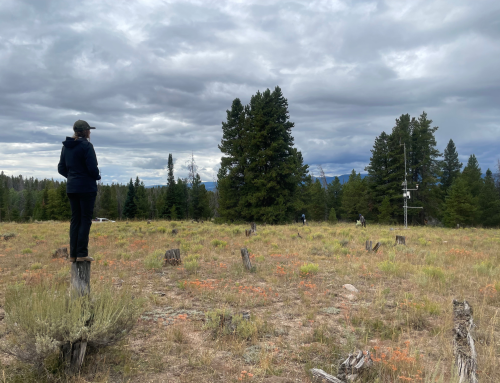MARCH 12, 2014 BY
Last week, I attended the March 4 Steamboat Springs City Council meeting and was alarmed by comments made by City Council members that “sustainability does not even rank in the top-five goals for the council at this time.”
I came away from that meeting with three realizations.
#1. Not all City Council members understand the meaning of sustainability;
#2. The city of Steamboat Springs is not a leader in sustainability in the country, state or even, some might argue, locally; and
#3. The priorities of City Council are out of alignment with the priorities of their constituents.
To address the first issue — what is sustainability? Sustainability is not just about spending city money to do some energy-efficiency upgrades or to purchase some solar panels. Sustainability is a lens through which all decisions are made to create a community, as defined in the city’s own Sustainability Plan “as one that maintains the integrity of its natural resources over the long term, promotes a prosperous economy, and hosts a vibrant, equitable society.”
This is about making decisions for the long term regarding resilience, expense control and reduction, security and protection of our open space for our visitors and for future generations. Perhaps it is time for the current council to reread its own plans and definitions for sustainability in our community.
To address the second issue — lack of leadership in sustainability. Currently, the city of Steamboat Springs is the only community of the 21 Colorado Association of Ski Towns that does not have an Energy Plan or Climate Action Plan, either completed or in development.
By comparison, Garfield County, also a hub for past coal mining and current oil and gas exploration, was able to agree to an energy resolution to “be the most energy-efficient county in the country” with a goal of 20 percent per capita energy-efficiency improvements, 25 percent petroleum reduction and 35 percent of electricity from renewables by 2020 as a means to a more resilient, energy-secure economy. To achieve these energy goals, each community in Garfield County prepared Energy and Climate Action Plans with identified actions and policies.
The result: Carbondale, one of the Garfield communities, has engaged more than 140 clean-energy and energy-efficient businesses in their area, has leveraged more than $6.7 million in energy productivity projects and was identified as one of Outside Magazine’s “Best Towns 2013” because of “a thriving green-energy economy.” Leadership is not about paying bills (stewardship); it’s about navigating our ship to a better place in the future. I hope to see more of this type of leadership from our council.
And finally — misalignment of the priorities of City Council with those of the residents of Steamboat Springs. Vision 2030, the Community Area Plan and the city’s Sustainability Management Plan are three guiding documents developed with strong community and staff input and involvement. In all three of these documents, sustainability and the preservation of the natural environment were identified as integral to the identity of our community and our economy.
Did the hard work and vision of so many in our community yield a small library of documents never to be reviewed? How is it that well-defined commitments toward sustainability are not even in the top-five priorities set by the individuals on council?
It is clear that constituents have identified sustainability as a priority for our community. The job of City Council is to represent the interests of their constituents. I strongly encourage City Council to make sustainability a priority moving forward.






